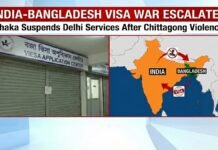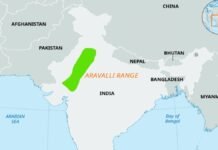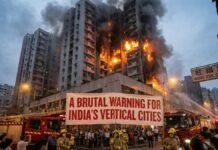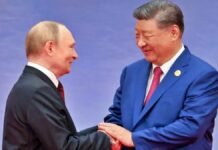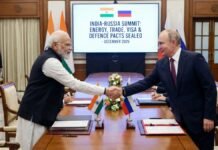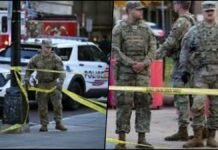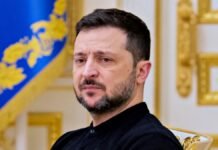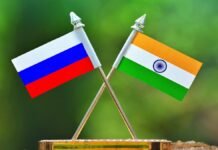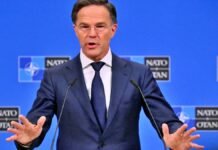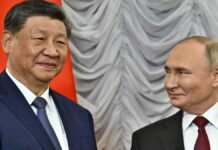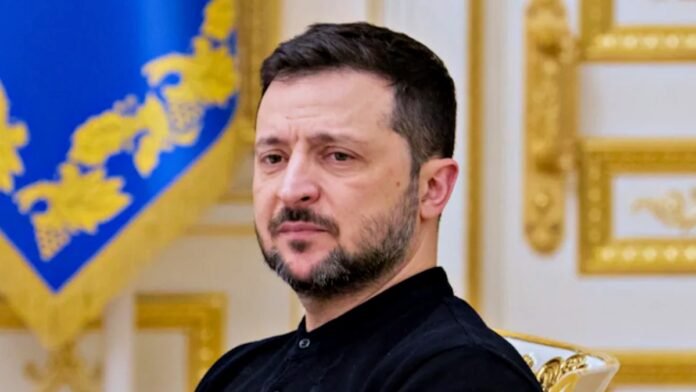
Key Points
- US discussions advancing on bilateral Putin–Zelensky talks, with a potential trilateral format involving the US also under consideration.
- Budapest, Hungary, emerging as a key venue option; preparations reportedly underway while multiple locations remain on the table.
- White House spokesperson Caroline Levitt declines to confirm venue; says many options considered, with security teams engaged.
- Russia signals conditional openness to talks; Lavrov urges careful planning for any high-level meeting.
- Zelensky says Ukraine is ready for talks; hints a formal summit announcement could come within 7–10 days.
- US Secretary of State Marco Rubio welcomes momentum, calling Putin–Zelensky readiness a meaningful step.
New Delhi: Following recent White House-level talks, Washington is moving into a planning phase for possible negotiations between Russian President Vladimir Putin and Ukrainian President Volodymyr Zelensky. Two formats are reportedly on the table:
- Bilateral talks between Putin and Zelensky.
- A subsequent or linked trilateral session including US participation.
Budapest, led by Hungarian Prime Minister Viktor Orbán, has surfaced as a serious venue candidate due to Orbán’s longstanding ties with Washington and his active role engaging both Moscow and Kyiv. Parallel to the Budapest option, Putin has suggested a private one-on-one with Zelensky in Russia, indicating an interest in direct leader-level engagement.
White House Line: Options Open, Security Preps Ongoing
At a recent briefing, White House Press Secretary Caroline Levitt declined to confirm Budapest or any single location, stressing that “many options are being considered.” She emphasized:
- Both leaders have expressed willingness for face-to-face talks.
- US national security teams are coordinating to support the process.
- A trilateral sitting with the US could follow a bilateral session, depending on progress.
The approach suggests a phased diplomatic choreography: start with direct leader engagement, then broaden to a trilateral framework if conditions allow.
Russia’s Position: Open, But Only With Careful Planning
Russian Foreign Minister Sergei Lavrov signaled that Moscow does not categorically reject negotiations with Ukraine. However, he underlined that any high-level meeting must be meticulously prepared:
- Clear agenda and outcomes.
- Robust security and de-escalation guardrails.
- Realistic timelines and verification steps.
This aligns with a pattern in past diplomacy: high-stakes leader summits are most productive when preceded by intensive working-level agreements.
Ukraine’s Signal: Ready To Talk, Announcement Soon
President Zelensky stated Ukraine is prepared for talks with Russia and hinted that a formal summit announcement—format and venue unspecified—could come within the next week to 10 days. That timeline implies active behind-the-scenes coordination on:
- Venue security and logistics.
- Agenda prioritization (ceasefire parameters, humanitarian corridors, POW exchanges, nuclear safety, Black Sea shipping).
- Verification mechanisms and third-party guarantor roles.
US Framing: Encouraging Movement, Measured Expectations
US Secretary of State Marco Rubio welcomed the momentum, calling Putin’s stated willingness to meet a significant marker. He cautioned, however, that while the direction is constructive, the “ultimate goal” remains some distance away. The immediate focus is reportedly on:
- Establishing conditions for safe, substantive leader talks.
- Sequencing confidence-building measures.
- Ensuring any meeting produces tangible deliverables rather than optics.
Why Budapest Makes Sense
- Geopolitical posture: Hungary is a NATO/EU member maintaining dialogue channels with Moscow and Kyiv, offering unique convening leverage.
- Security logistics: Budapest has hosted high-profile summits and can accommodate robust multi-agency security operations.
- Political bandwidth: Orbán’s active mediation can help bridge procedural gaps, even as differences within the EU on Russia policy persist.
Key Issues Likely On The Agenda
- Ceasefire contours and monitoring architecture.
- Civilian protection: humanitarian access, energy and water infrastructure shielding.
- POW exchanges and missing persons mechanisms.
- Nuclear safety protocols around sensitive facilities.
- Black Sea grain/shipping guarantees and port security.
- Sanctions relief sequencing tied to verified steps.
- Long-term security assurances and neutrality/sovereignty frameworks.
What To Watch Next (7–10 Days)
- Formal announcement of meeting format (bilateral first vs immediate trilateral).
- Venue confirmation (Budapest vs alternatives) and date window.
- Pre-summit confidence-building steps (local ceasefires, prisoner exchanges).
- Coordinated statements from Moscow and Kyiv on agenda priorities.
- Third-party facilitation details (EU, UN, OSCE roles).









